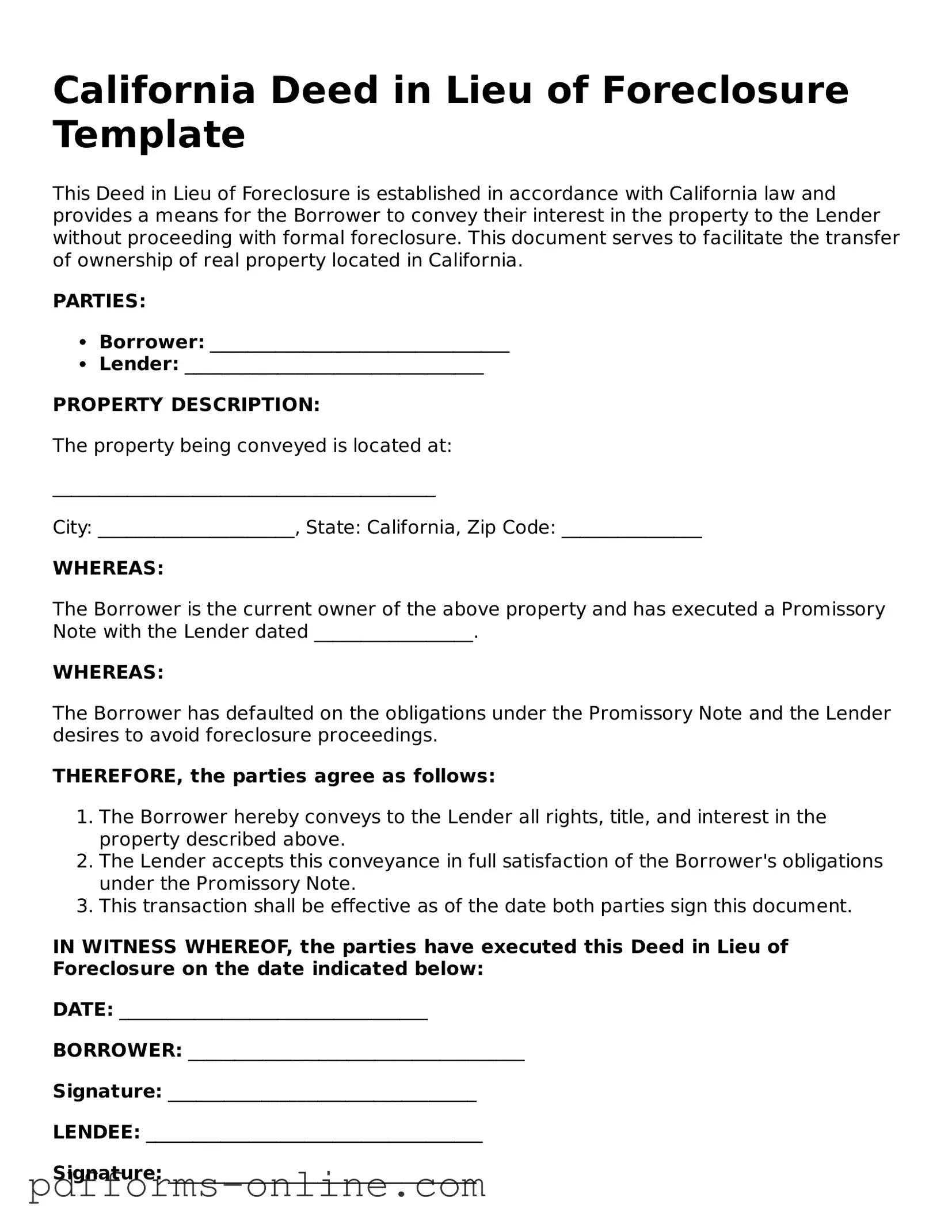California Deed in Lieu of Foreclosure Template
This Deed in Lieu of Foreclosure is established in accordance with California law and provides a means for the Borrower to convey their interest in the property to the Lender without proceeding with formal foreclosure. This document serves to facilitate the transfer of ownership of real property located in California.
PARTIES:
- Borrower: ________________________________
- Lender: ________________________________
PROPERTY DESCRIPTION:
The property being conveyed is located at:
_________________________________________
City: _____________________, State: California, Zip Code: _______________
WHEREAS:
The Borrower is the current owner of the above property and has executed a Promissory Note with the Lender dated _________________.
WHEREAS:
The Borrower has defaulted on the obligations under the Promissory Note and the Lender desires to avoid foreclosure proceedings.
THEREFORE, the parties agree as follows:
- The Borrower hereby conveys to the Lender all rights, title, and interest in the property described above.
- The Lender accepts this conveyance in full satisfaction of the Borrower's obligations under the Promissory Note.
- This transaction shall be effective as of the date both parties sign this document.
IN WITNESS WHEREOF, the parties have executed this Deed in Lieu of Foreclosure on the date indicated below:
DATE: _________________________________
BORROWER: ____________________________________
Signature: _________________________________
LENDEE: ____________________________________
Signature: _________________________________
This document may be recorded in the appropriate county office to provide notice of the transfer of property ownership.
